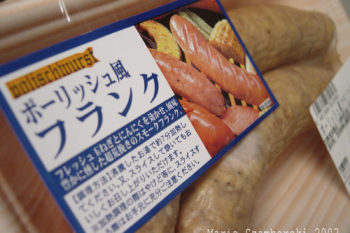Pastéis de Nata are one of the most famous Portuguese pastries. Once you put your feet for the first time in Lisbon, you know you will end up at Pastéis de Belém, enjoying this egg tart pastry, sprinkled, comme il faut, with cinnamon and powdered sugar.

You also know that you should be patient because many people will be there on the waiting line. However, you know it will be worth it, not only because of the quality of the pastry, but also because you are in the place where the first globalization of the world has begun, Belém.
Belém is probably the most famous neighbourhood in Lisbon. It’s the place par excellence of the most important period of Portuguese History -the 16th century-, when Portugal gave worlds to the world, as our major poet, Luiz Vaz de Camões, has sung in our major poetry epic book, Os Lusíadas.
In those days, we made the first globalization the world has known. We crossed, in 1488 for the first time in History, the Torments Cape in South Africa and we named it Cape of Good Hope (Cabo da Boa Esperança), we arrived for the first time by sea to India in 1498, and in 1500, we discovered Brazil.
Portugal became the first Maritime Empire of the world. In 1511, we were the first Europeans arriving in Thailand (Reino do Sião), in 1513 we arrived in China and in 1542, we were in Japan. The world was finally connected and Lisbon was its capital.
Still in the line, looking around, waiting to reach to the Casa de Pastéis de Belém‘ doors, we spot the Belém Tower (Torre de Belém), the Discoveries Monument (Padrão dos Descobrimentos) and the Heyronymite Monastery (Mosteiro dos Jerónimos), where it is believed that the Pastéis de Nata were created before 18th century.

In 1837, Casa Pastéis de Belém opened its doors and became the first and only place outside the convent selling the Pastéis de Belém made according to the original recipe. Today, around 15.000 Pastéis de Belém are sold everyday.
The recipe is a secret very well kept. The master confectioners (mestres-pasteleiros) working there are obliged to do an oath and sign a document stating they will keep the recipe’s secret. That’s why the Pastéis de Belém factory is known as A Oficina do Segredo (The Secret’s Room). We can buy Pastéis de Nata in other places in Lisbon, but the real ones are the Pastéis de Belém, made with egg yolks and sugar.

The Pastéis de Nata are also very popular in Macau ( that was under Portuguese administration until December 19, 1999) and in China where they are known as “dan ta” which means egg pastry. Cambodia, Singapur, Hong Kong and Taiwan are other Asian countries where you can enjoy a pastel de nata.
If you go to Lisbon in the near future, try to eat the real Pastel de Belém. Just don’t pay and go. Stay inside of the building and sit down in the larger room behind the balcony and the corridor. Just admire the tiles in the walls, feel the history of the place, while enjoying the 15th most delicious delicacy in the world, according to the British newspaper The Guardian.

Then, if you taste more than one, and you feel like you need to walk for a bit, give a romantic stroll in the exquisite tropical garden (Jardim Tropical) just behind you.
I leave you with the link of the recipe in English. Enjoy!
Read more
Magusto: a Portuguese Autumn celebration
5 interesting facts about Portugal
Poetry and music, a Portuguese liaison





Sandra, I enjoyed reading this post very much. It took me back to Lisbon and those little pieces of heaven!
🙂 I’m always very pleased to know that someone enjoyed my beloved Lisbon and, of course, our typical pastries. 🙂
I’ve been to Lisbon twice, and both times went to this cafe! These cakes are amazing. We have custard pies in England but they are nothing in comparison. It’s nice to know more about their history. Thanks Sandra!
Wonderful, Sandrinha – what, we reading Ana’s post about her recent trip to Lisbon and all the times I’ve heard you talking about the pastéis de Belém, I can’t wait to taste them! Very interesting story they have as well!
I don’t know if you’ve ever had the Spanish “yemas” but they sound close to your pastéis…. mmmmm….
OH DEAR, these look soooo good! These have to be my favorite treat in the French patîsserie!!! THANK YOU DEAR ONE for the link! I may take some relaxing time this weekend to make these!!! Anita
Thank you all for your comments!
Liz: My mother loves these custard tarts! I’m not very fan of it (mea culpa) but I adore the place. It’s very charming and pretty!
Aledys: You know, since Ana suggested me to do this post, I’ve been thinking to write another one about several Portuguese pastries. I will include, of course, the ones I’m always talking you about, the Travesseiros de Sintra. Oh, I just love them! Absolutely delicious!
Anita, Enjoy it and don’t forget to eat them warm and with cinnamon 😉